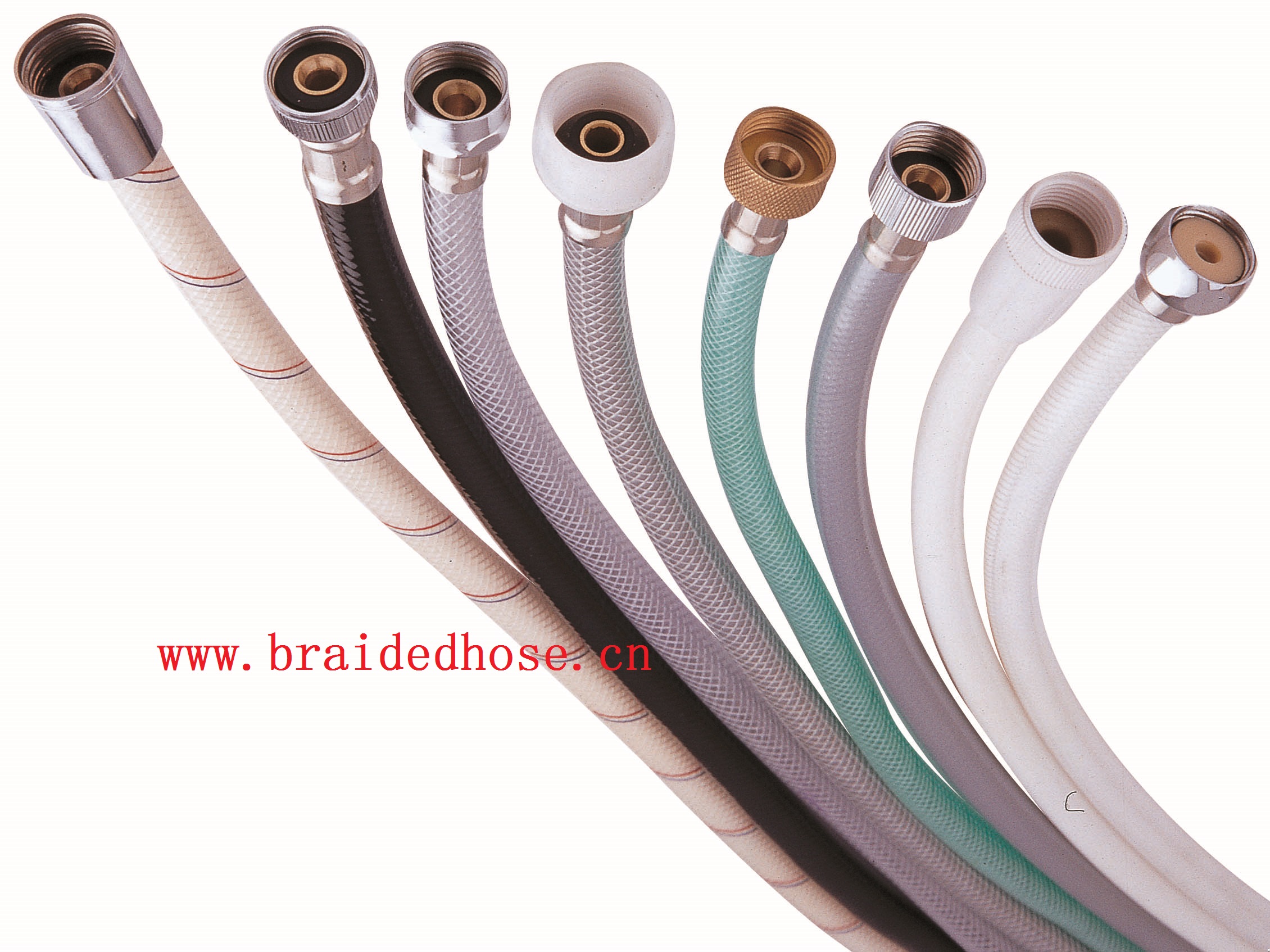What’s the Difference Between PVC Hoses and Rubber Hoses
What’s the Difference Between PVC Hoses and Rubber Hoses?
As mentioned earlier, PVC hoses and rubber hoses may appear similar. However, they differ in many aspects, from composition to durability. In this section, I’ll discuss some key distinctions to help you avoid choosing the wrong hose. Let’s begin!
1. Material Composition
A notable difference between PVC and rubber lies in their composition. For instance, PVC hoses are made from a special plastic called polyvinyl chloride—a synthetic polymer composed of multiple monomers. Manufacturers also add plasticizers, stabilizers, and other additives to enhance flexibility.
In contrast, rubber hoses are made from either natural or synthetic rubber. Natural rubber is derived from the latex of rubber trees and processed into hoses, while synthetic rubber hoses often use materials like EPDM (ethylene propylene diene monomer) or nitrile rubber for extreme conditions.
2. Flexibility
Flexibility is one of the most common differences between rubber and PVC hoses. It refers to how easily a hose bends without breaking. Rubber hoses are inherently elastic, offering superior flexibility due to their higher tensile strength—meaning they can stretch and bend without risk of cracking.
PVC hoses, however, are less flexible and more rigid due to lower elasticity and tensile strength. They’re prone to cracking when bent or compressed. While stabilizers are added to improve flexibility, these additives can lose effectiveness in cold temperatures, making the hose brittle.

3. Durability and Strength
Durability is a critical factor distinguishing the two hoses. Why? Because strength correlates with flexibility. Higher flexibility often means greater resilience. For example, PVC hoses, being less flexible, are more susceptible to hardening and cracking. Exposure to UV rays further degrades their plastic components, reducing flexibility and strength.
Rubber hoses, on the other hand, excel in durability and flexibility. They withstand twisting, bending, and stretching without breaking, thanks to their impact resistance. They also maintain integrity under various environmental conditions, ensuring a longer lifespan.
4. Temperature Resistance
This refers to a hose’s ability to endure high and low temperatures. PVC hoses have a melting point of 60°C (140°F), softening or melting beyond this threshold. In freezing conditions (below -10°C/14°F), they become brittle and crack. Thus, PVC hoses are suitable only for low to moderate temperatures.
Rubber hoses, however, have a higher melting point (120°C/248°F) and remain sturdy under heat. Even in extreme cold (-40°C/-40°F), they retain flexibility without becoming brittle, making them ideal for frost-prone environments.
5. Pressure Handling
Hoses often transport high-pressure fluids or gases. PVC hoses, being lightweight, may expand or burst under high pressure (max 50–300 PSI). They’re also prone to kinking, which obstructs flow.
Rubber hoses outperform with superior pressure resistance (300–6,000 PSI). Their flexibility and heavier construction prevent kinking and ensure smooth fluid transfer, even under extreme pressure.
6. Chemical Resistance
PVC hoses tolerate weak acids, detergents, and non-corrosive liquids but degrade when exposed to fuels, strong alkalis, acids, or gasoline. Rubber hoses, with reinforced layers, resist corrosive substances like oils, solvents, and harsh chemicals, making them safer for industrial use.
7. Weight and Handling
PVC hoses are lightweight, easy to install, and portable, but their low density makes them prone to kinking and reduces stability under pressure. Rubber hoses are heavier and harder to maneuver but offer better stability and kink resistance.
8. Environmental Impact
PVC hoses are petroleum-based, non-biodegradable, and release toxic chemicals (e.g., dioxins) during decomposition, contributing to pollution. Rubber hoses, especially those made from natural rubber, are biodegradable and recyclable, posing fewer environmental risks.
9. Applications
PVC hoses are used for:
- Garden irrigation and plant watering
- Low-pressure tasks (e.g., compressors, pneumatic tools)
- Drinking water delivery (food-grade variants)
- Pool and spa water circulation
Rubber hoses are ideal for:
- Fuel/oil transfer
- Hydraulic systems and high-pressure machinery
- Transporting harsh chemicals
- Steam and hot water delivery in industrial settings
10. Cost and Affordability
PVC hoses are cheaper upfront due to low-cost materials and lightweight production. However, frequent replacements may increase long-term expenses. Rubber hoses have a higher initial cost but prove cost-effective over time due to durability and extended service life.
Final Thoughts
While PVC hoses are budget-friendly for light-duty tasks, rubber hoses outperform in durability, flexibility, and extreme conditions. Your choice depends on specific needs—whether it’s cost, pressure handling, or environmental factors.
Want to know more about hose knowledge please visit our website :http://www.braidedhose.cn/en/index.html

 简体中文
简体中文 English
English